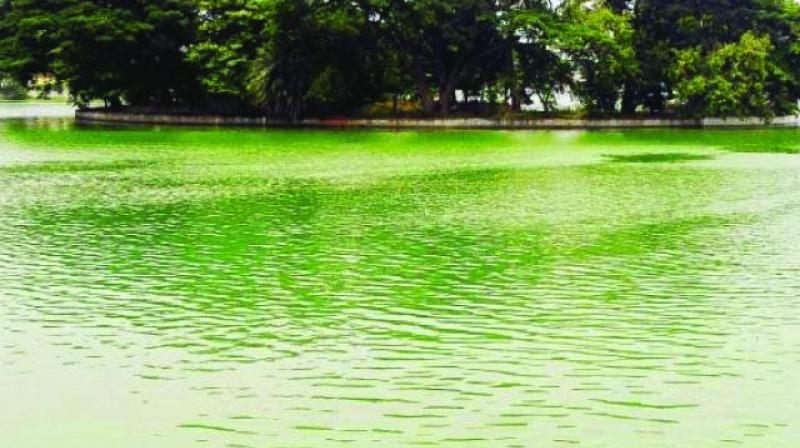Bhatsa Dam
|
About:
|
|
The Bhatsa Dam is a significant dam located in the Thane district of
Maharashtra. It was constructed as a multipurpose dam to provide water
for irrigation, drinking water supply, and hydroelectric power
generation. The dam is built on the Bhatsa River, which is a tributary
of the Ulhas River. It plays a critical role in supplying water to the
city of Mumbai.

A tributary of Ulhas River, Bhatsa River originates near Igatpuri, a hill
station in Nasik District. On the basin of the river lies the Bhatsa
River Valley which is noted for its scenic beauty.
|
Location info:
|
| The Bhatsa Dam is situated near Shahapur in the Thane district,
approximately 90 km from Mumbai. It is nestled within a lush, green
environment, with the Western Ghats surrounding the area, making it a scenic
and peaceful spot.
|
Climate/Weather:
|
| Summers (March to June): The region experiences hot and dry summers, with
temperatures ranging from 30°C to 40°C.
Monsoons (June to September): The dam area receives heavy rainfall during
the monsoon season, which contributes significantly to filling the
reservoir.
Winters (November to February): Winters are mild and pleasant, with
temperatures ranging between 15°C and 25°C, making it an ideal time to
visit. |
History:
|
| Bhatsa Dam was built in the 1980s as part of the larger Bhatsa Project aimed at solving Mumbai’s water crisis. It has since become a crucial component in the city's water supply system and also contributes to irrigation in nearby agricultural areas.
|
Interesting things to do:
|
| Igatpuri is famous for is its Vipaasana meditation centre well known as
Dhammagiri and attracts scores of people from all over the world. There is
ample opportunity for trekking, hiking and cycling.
A local favourite one shouldn't miss eating is the humble vada pav - a patty
with a potato cutlet and chutney, which this area is famous for. |
Interesting things to Visit:
|
|
Ghantadevi Mandir
Ghantadevi Mandir located a few kilometers from the Camel valley.
Tringalwadi Fort
Tringalwadi Fort located not too far away from the Mahindra & Mahindra
plant is a trekker’s delight.
Tringalwadi Lakeand the Talegaon Lake and Dam.
The Wilson Dam mentioned earlier is built on the Pravara
river close by and from the dam one can see the highest peak of that
range Mount Kalsubai.
The Amruteshwar Temple is another attraction known for
its intricate carvings in the Hemadpanti style. Other places to see are
the Agasti Rishi Ashram, the Ratangad Fort. and the Davebandh Ganesh
Temple.
|
Mobile range info:
|
| Mobile network coverage is available in the nearby town of Shahapur and most areas around the dam, but signal strength may fluctuate in some remote areas near the reservoir.
|
How to reach?
|
| Nearest Railway Station:Being a junction, Igatpuri is well connected
to all the major destinations. |
| Nearest Airport:Mumbai at 140 km is the nearest airport from where
one can either take a train, bus or hire a taxi. |
| Road Transport:It will take 3 hours to reach Igatpuri by NH 3 via
Shahpur and Kasara Ghats. There are also regular buses from Mumbai and
Nashik to Igatpuri |
Nearest Visiting places:
|
- Shirdi
- Trimbakeshwar
- Nashik-The Holi City
- Ghatan Devi Temple
- Infant Jesus Church
- Vaitarna Dam
- Malegaon Dam
- Bhandardara Dam
- Dhamagiri Vipaasana Centre
|
Nearest Petrol Pump:
|
| The nearest petrol pump is located in Shahapur town, approximately 15-20 km from the Bhatsa Dam.
|
Hotels/Lodge/Accommodation:
|
| Resorts near the Western Ghats: There are several eco-resorts and nature lodges in and around Shahapur and the Western Ghats region for those looking for a comfortable and nature-filled stay.
|
Things to carry:
|
| Drinking water and snacks, especially if you plan to have a picnic near the dam.
Sun protection (hats, sunglasses, sunscreen) if visiting during the summer.
Comfortable footwear for walking and exploring the dam area.
A camera for capturing the scenic views.
If trekking to nearby attractions like Mahuli Fort, carry trekking gear and essentials. |
Tips & Suggestions:
|
| The best time to visit Bhatsa Dam is during the post-monsoon season (September to February) when the weather is pleasant and the reservoir is full.
Avoid visiting during the peak monsoon season, as heavy rains can cause flooding in some areas.
Be cautious around the water, especially if boating or fishing, as the reservoir is deep.
Respect the natural environment and avoid littering. |
Help Line/Phone Number:
|
| Police Station:100 |
| Nearest Hospital:At the Nearest City. |